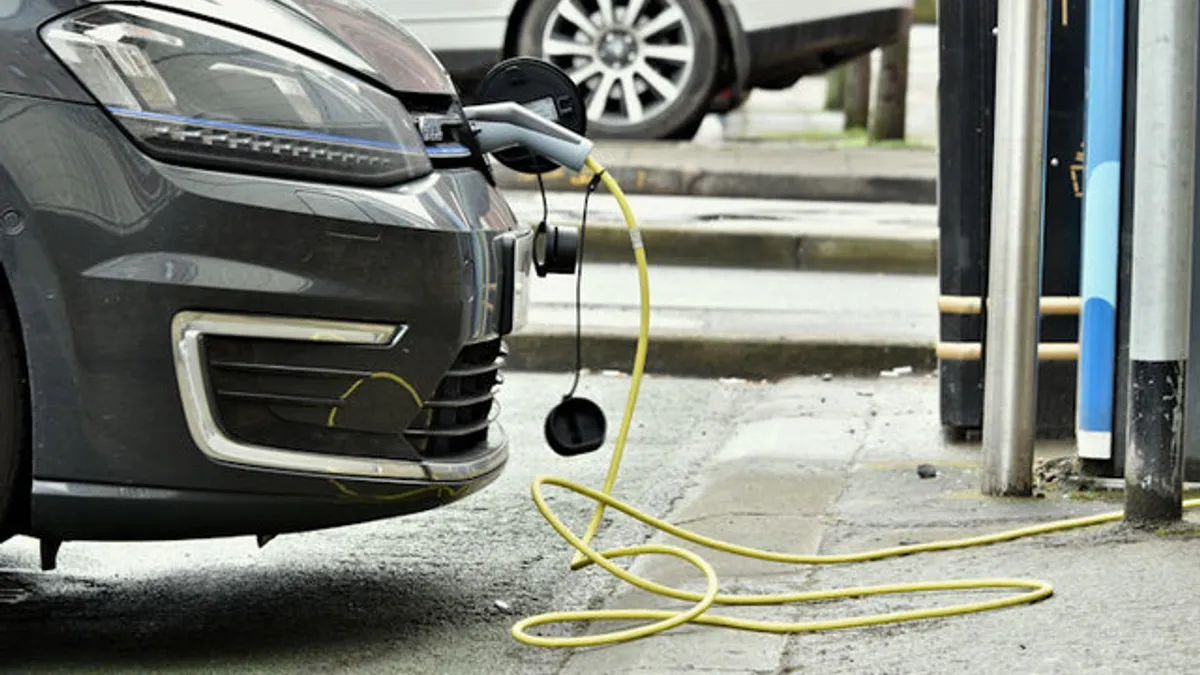Dive Brief:
- Xcel Energy on Wednesday unveiled a strategy to serve 1.5 million electric vehicles by 2030, which the utility said amounts to an anticipated 30-fold increase in plug-in vehicles across its eight-state service territory.
- Xcel has proposed $300 million of investments in Colorado, Minnesota, New Mexico and Wisconsin, that include a smart charging pilot, fleet infrastructure programs, initiatives to boost public charging and residential subscription plans.
- The utility expects 20% of all vehicles in territories it serves to be replaced by EVs within the next decade, to operate at the equivalent of $1/gallon of gasoline.
Dive Insight:
Xcel is planning to deliver 100% carbon-free electricity by 2050, and says its cleaner mix of generation paired with expanded EV adoption will result in significant customer savings and carbon reductions.
By 2030, the utility expects customers will pay $700 less per year to drive an EV than to fuel a gas-powered car.
“Electric vehicles are the next frontier in the clean energy transition," Xcel Chairman and CEO Ben Fowke said in a statement. "We have substantial plans in place in the states we serve, and we can expand on this with partnership and support from policymakers, regulators, customers, automakers and our communities.”
The plan will result in $1 billion in annual customer fuel savings, through a mix of residential charging, increased access to public electric transportation and charging, and faster fleet electrification, according to the utility.
Xcel anticipates 1.5 million EVs to reduce carbon emissions by nearly 5 million tons annually in the next decade — about three tons of carbon reduction per vehicle. The company says EVs charged on its system will have 80% lower carbon emissions than gas-powered cars by 2030.
Along with enabling greater EV use by its customers, Xcel plans to make changes in its own operations: the utility will electrify all of its sedans by 2023 and light-duty vehicles by 2030, and 30% of its medium- and heavy-duty vehicles will be electrified by 2030.
While sales of electric vehicles have slowed due to the COVID-19 pandemic, there is still optimism for the long-term outlook.
Global EV sales are expected to drop 43% this year, according to Wood Mackenzie. In 2019, there were 2.2 million EVs sold, but the research firm expects just 1.3 million to be sold this year.
“As an industry, we have a tremendous opportunity in front of us to electrify the transportation sector to further leverage our industry’s impressive emissions reductions,” Edison Electric Institute President Tom Kuhn said in a statement. The group represents Xcel and other investor-owned utilities.
Clean energy advocates celebrated Xcel's new transportation electrification strategy.
The utility's plan to expand electric vehicle charging infrastructure and add customer programs to foster EV adoption "is a strong step toward reducing emissions that drive climate change,” Western Resource Advocates’ transportation electrification manager Aaron Kressig said in a statement. And the utility's plan to electrify its own fleet "sets an example for other companies," he added.
The Natural Resources Defense Council (NRDC) called Xcel's announcement "an exciting development" that is part of a trend of states, businesses and local governments accelerating the push to electrify transportation.
“It’s (past) time for the federal government to take notice of state and corporate leadership and ensure that the entire U.S. can benefit from clean transportation options,” Luke Tonachel, NRDC director for clean cars and fuels, wrote in a blog post Wednesday.
Together with stronger federal standards, a “supportive package of investments will help speed adoption and build U.S. jobs,” Tonachel said.
Xcel has begun rolling out investments and programs to expand EV adoption. The utility has a charging subscription pilot in Minnesota that allows unlimited off-peak charging for a flat monthly fee. A new smart charging pilot in Colorado will begin later this year, and will pay customer incentives for charging at times when it benefits the broader grid. New programs in Minnesota and Wisconsin will provide customers with a Level 2 charger.














